Expo / Global
A modern way to ski
Seeking to offer an alternative to typical après-ski chalets and ski lifts – and hoping to attract serious skiers with a maverick streak – the ‘Silver Fox’ and his crew of visionaries set out to create a modernist resort high up in the occasionally inhospitable peaks of the Rocky mountains. The result, Snowbird, is built to withstand avalanches and transport thrill-seekers up to double-black runs in minutes. Monocle jumps into an enormous SUV to head for the hills and find out why this resort remains a destination for those who love to combine adrenaline-inducing skiing with high-altitude architecture.
A dusting of powder blows over Utah State Route 210 as monocle drives up the canyon from Salt Lake City. Mountains loom above, covered in white snow and dark trees. Bound for Snowbird ski resort, a 1971 gem of modernist architecture hidden high in the Rocky mountains’ Wasatch Range, this stretch of highway is among the most avalanche-prone in the US. Road closures are frequent and the 30-minute drive from the Utah state capital is best navigated with sturdy vehicles (monocle opts for an enormous, chauffeured black gmc Yukon).

“Snowbird is the first studiously modern American ski resort,” says Jack Smith. The Fellow of the American Society of Architects, now 92, was instrumental in the design of this pioneering destination, as an original member of the Snowbird Design Group. More than 50 years after opening, its bold concrete architecture – which includes several large, multi-purpose lodges, a hotel and conference centre, resort operations facilities and even a fire station – still feels contemporary. “Concrete is a miracle,” explains Smith. “You mix gravel, sand and water and get the hardness of stone. You can use it to make something special that has not been seen before.” Indeed, when it was completed, nothing like Snowbird had been seen before in the US, with its angular, modernist buildings emerging from the contours of the rocky, mountainous landscape.
“It erupts from nature, rather than imposing on it,” adds Smith, explaining that Snowbird’s building forms and materials suit the character of the mountains. But perhaps this shouldn’t come as a surprise. Little Cottonwood Canyon, where Snowbird is located, was formed by the immense force of millennia-old glaciers, carving out exceptionally steep slopes that have made its ski runs some of the world’s most thrilling – and conditions that make this landscape very difficult to build on.
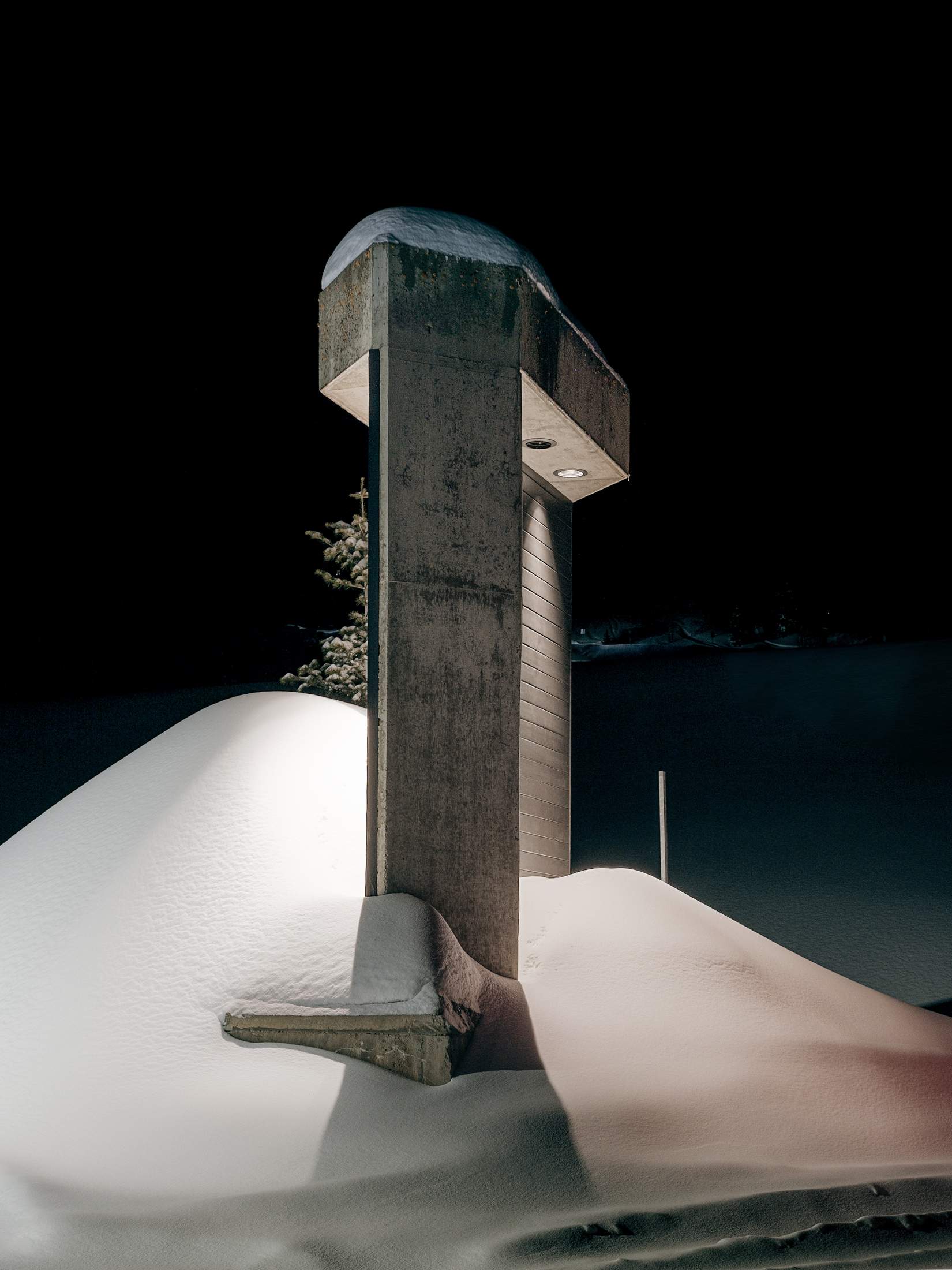

But it’s this tough terrain that first drew Snowbird’s founder, Ted Johnson, to the area in the mid-1960s, when he took a job at the neighbouring Alta Ski Resort. Known as the “Silver Fox” for his good looks and mane of light-grey hair, Johnson was a thrill-seeker on skis and appeared in now-classic Warren Miller-directed ski movies and on the cover of Sports Illustrated (twice). But he also carried a similarly adventurous streak in his business dealings, as evidenced by his moves at Snowbird.
Fuelled by a desire to create a truly unique ski experience in Utah, on terrain so steep that it initially seemed impossible to develop, Johnson and his wife, Wilma, began to research the prospect of building a resort in the canyon. After identifying that the landscape where Snowbird is located amid US Forest Service land, crossed by a host of different historical mining claims (land titles that allow private development), the duo set about trying to collect all of the claims.
“Wilma went to the records office in Salt Lake County to research the claims,” says Neil Cohen, Snowbird’s official historian and retired 52-year-old veteran manager of the resort’s Golden Cliff Restaurant. The Johnsons slowly bought the claims and, in 1964, approached Smith, a friend and fellow avid skier, to start design work. Initial consultations took place in secret (to avoid others laying claim to the, well, claims) and the Snowbird Design Group was formed – a motley crew of architects and others passionate about skiing and striking gold with a new kind of resort.
In addition to tapping Smith, Johnson also hired Ted Nagata early in the process to give Snowbird its graphic identity. The Japanese-American graphic designer’s “wing” logo, with Snowbird printed in Helvetica above it, is now a classic example of 1960s American graphic design. This branding was instrumental in developing “the black box”, a paper pitch deck for investors that Johnson used to raise the first $400,000 needed to start the development.
By 1967 the Snowbird Design Group had created the first master plan. And from the outset, it was clear that the resort was designed to be different. “Ted Johnson said, ‘I’m not going to have that European chalet motif,’” says Cohen. The resulting designs were bold and angular, influenced by modernist masters such as Mies van der Rohe and Le Corbusier and the pragmatic utility of the illustrious US Army 10th Mountain Division, who had brought recreational skiing back to the US after the Second World War.
Like Marcel Breuer’s 1969 modernist masterwork Flaine Ski Resort in the French Alps – an inspiration to everyone involved – Snowbird developed its own design language. Dictated by a topography that left little room for buildings, the design group prioritised structures that fit into the terrain rather than fighting it. With no space to sprawl in the steep canyon, initial construction in the early 1970s saw buildings rise taller than other typical ski resort architecture. But careful siting below the interstate highway and along the contour lines ensured hat the massive structures seem smaller than they are.
Key to this approach was the master modernist landscape architect Dan Kiley, a mentor to Smith, who provided key input in suggesting the “skiers’ bridge” over Little Cottonwood Creek, which divides the canyon. The bridge seamlessly connects the ski slopes directly with the centrepiece Snowbird Center, one of the first spate of buildings completed for the opening day on 23 December 1971. The megastructure contains ski facilities and dining, alongside the base station of the Snowbird Tram.
Also among the facilities open at Snowbird’s inception was the now-beloved aerial tram. One of the first of its kind in the US, its blue-and-red cars travel 884 vertical metres to the top of the resort – an area known as Hidden Peak – in 13 minutes. Built by workers from Swiss lift company Garaventa (who brought their own liquor to Salt Lake’s dry Mormon country), it was – and still is – the most efficient option for transporting skiers to the peak.
This foundational work proved to be (unsurprisingly) expensive, and Johnson needed more cash to make his vision a reality. The most significant investors was Texan rancher, oilman and adventurer Dick Bass. Initially coming on board in 1969, Bass spending more than $13m on the resort by opening day. Development continued at pace, with the constellation of architects responsible for Snowbird evolving to include the likes of James Christopher and Ray Kingston. Bass became patron saint of Snowbird, buying Jonhnson out in 1974.
The finest expression of Snowbird’s architecture is The Iron Blosam, a lodge that was finished in 1975. Its intricate concrete, steel and wood façade used one of the first staggered transverse construction systems in the US: each concrete floor slab both hangs and supports the next element. It’s a method of building that allowed the creation of double-height living rooms in all units as well as a multi-levelled common space, built around a large central hearth (entering the space today, one is reminded of a gentler age in hospitality, with wooden details including mail cubbies tucked behind a bell desk).

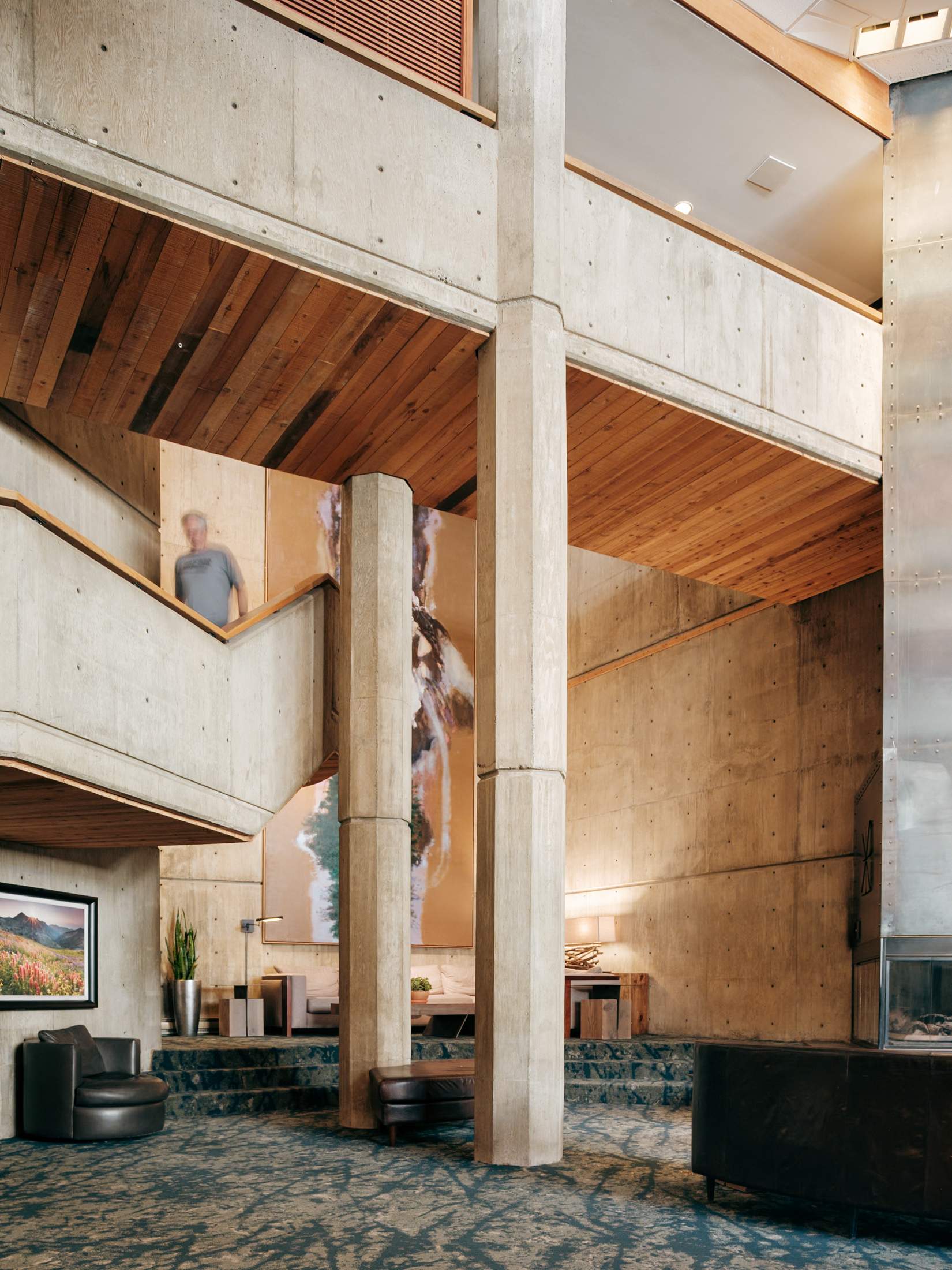
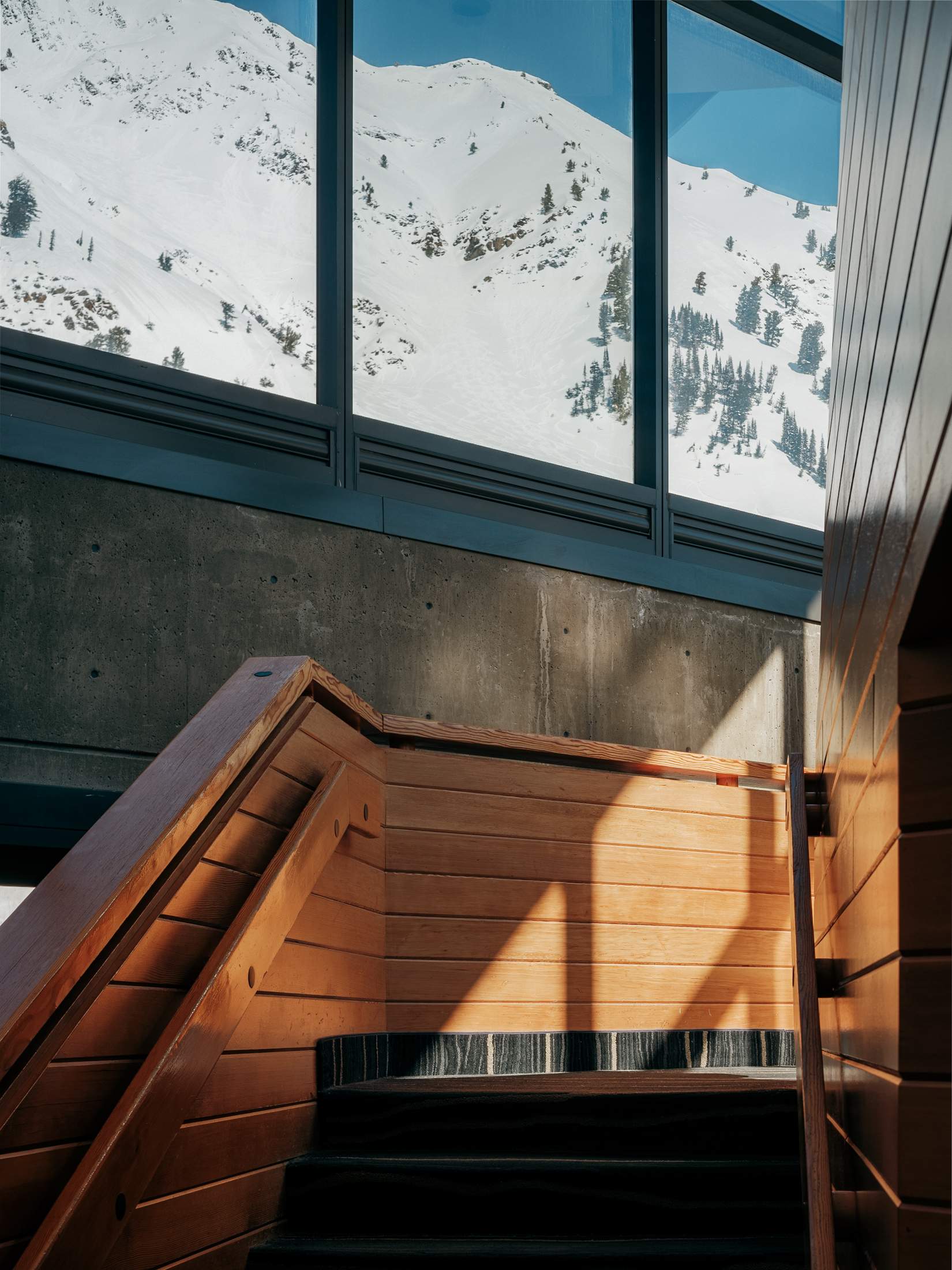
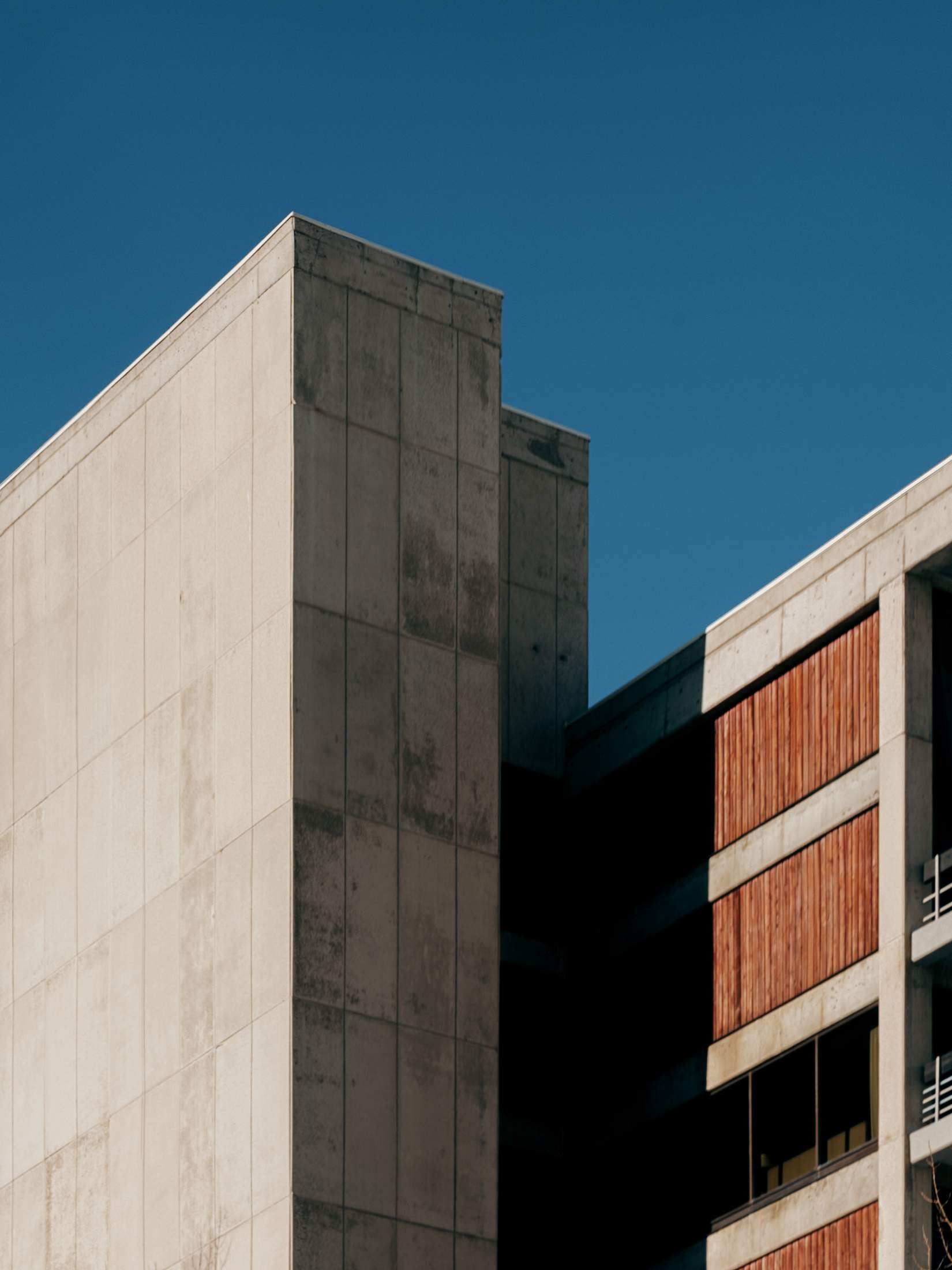
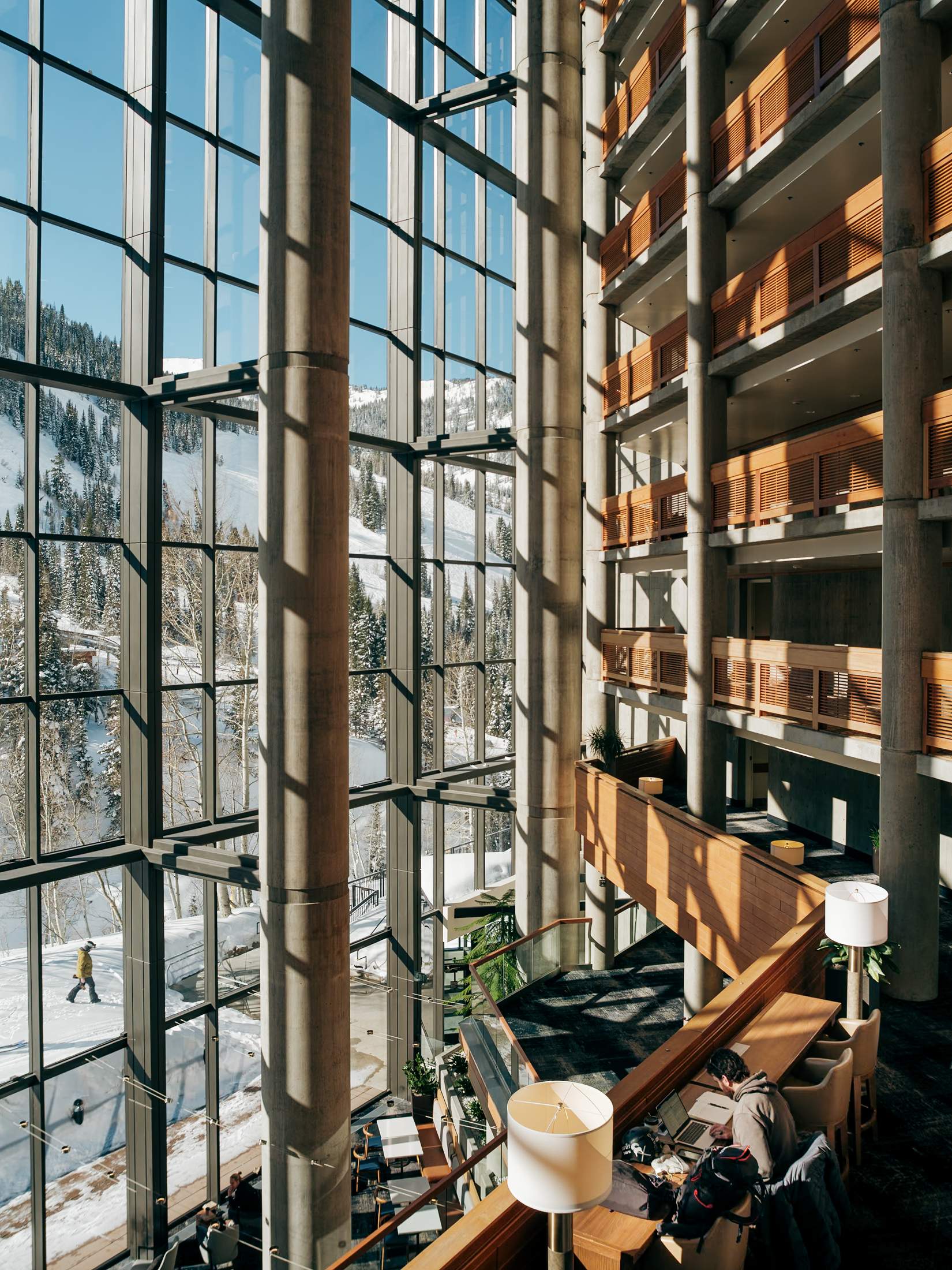
Slightly uphill from the Blosam and other central buildings is the 12-storey Cliff Lodge, which was finished in 1974, itself complemented by a sizeable extension in 1986. It is Snowbird’s largest and most iconic building, crowned with a bright-blue heated outdoor pool and hot tub. The original Cliff Lodge condo units are angled at 45 degrees, providing views, balconies and wonderful articulation in the façade. This contrasts with the smoked-black 1980s hotel addition, which features an expansive 11-storey open atrium and a swooping mezzanine detailed in cedar. The Atrium Café sits at the bottom, opening early to serve coffee and flaky ham-and-cheese croissants for guests aiming to take the first tram up.
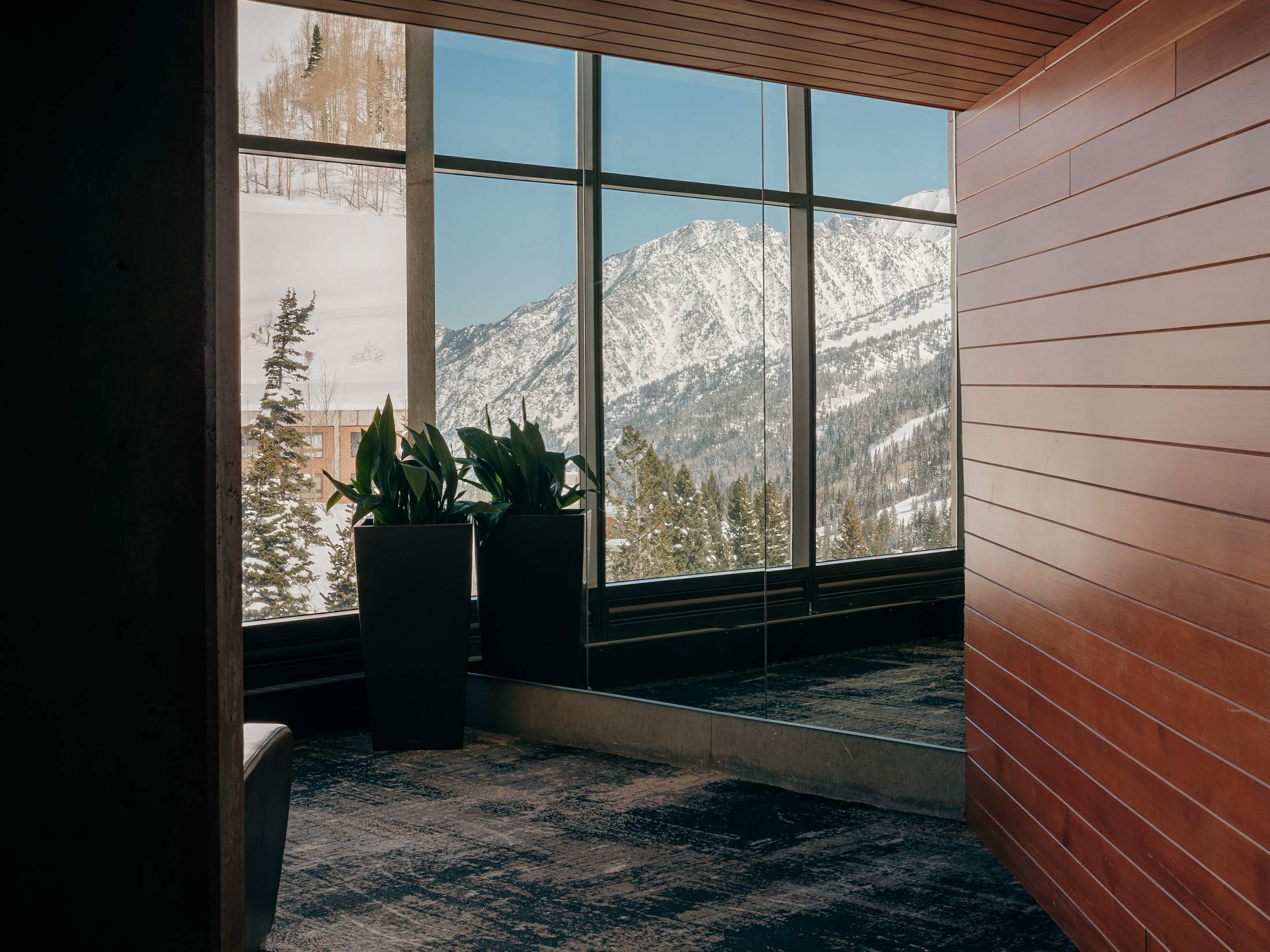
Snowbird is still operated independently, a growing rarity in the US. Bass continued as sole owner until 2014, when he sold to Ian Cumming of Powdr Corp, a small seven-resort group based in neighbouring Park City, Utah. A decade later, it’s clear that they understand the resort’s need to be different, if not the need for excellence in architecture. Recent structures, such as the Summit Restaurant and proposals for the replacement of the on-slope Mid-Gad restaurant (a masterpiece of wooden trussing) suggest a more modest contemporary design aspiration.
Luckily, the snow still falls. “We receive an average of 500 inches of snow every winter and in 2023 we hit almost 900 inches – the canyon record,” Dave Fields, Snowbird’s president and general manager, tells monocle with glee. The ski season roughly runs from November to May, with Utah powder – trademarked as “The Greatest Snow on Earth” – revered for being extremely dry, meaning that skiers can float in it chest-deep. (Snowbird is also a tree-skiing paradise, impressing monocle’s Swiss ski instructor and fixer, Roger Mogg. “You move through the forest in wild steep turns,” says Mogg. “That’s hard to find in Switzerland.”) Snowbird’s current terrain map also shows off its enduring appeal as a complex ski zone, with many black lines. “It challenges people and they’re forced to progress,” says Fields. The blacks are often double black and the blues are very dark blue. The names of the runs reference Snowbird culture, from “Bassackwards” (Dick Bass) and “Silver Fox” (Ted Johnson) to “Junior’s Powder Paradise”, named for the now 99-year-old former Snowbird ski school director Junior Bounous, who helped design trails – and who still gets out on the mountain.

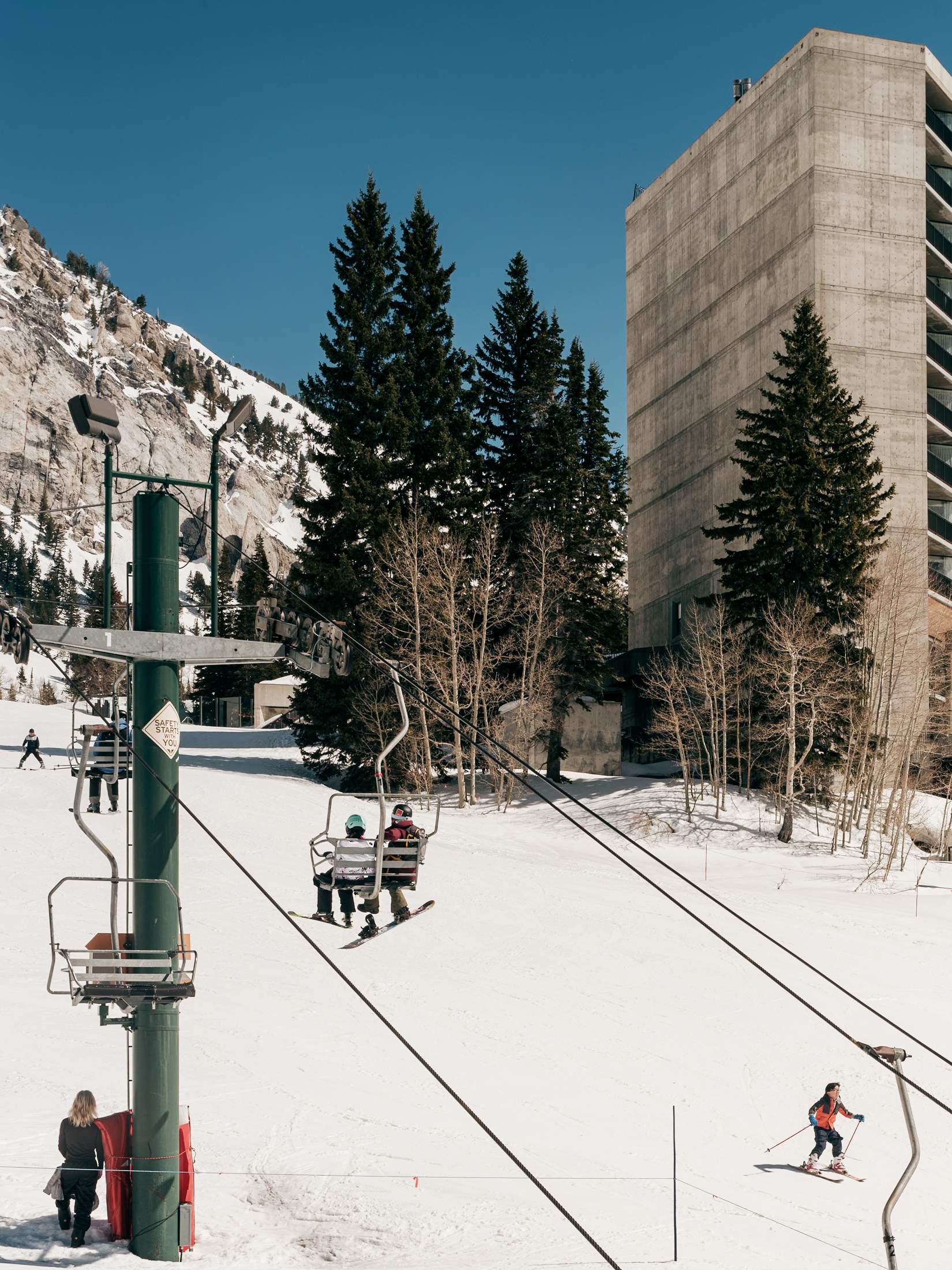
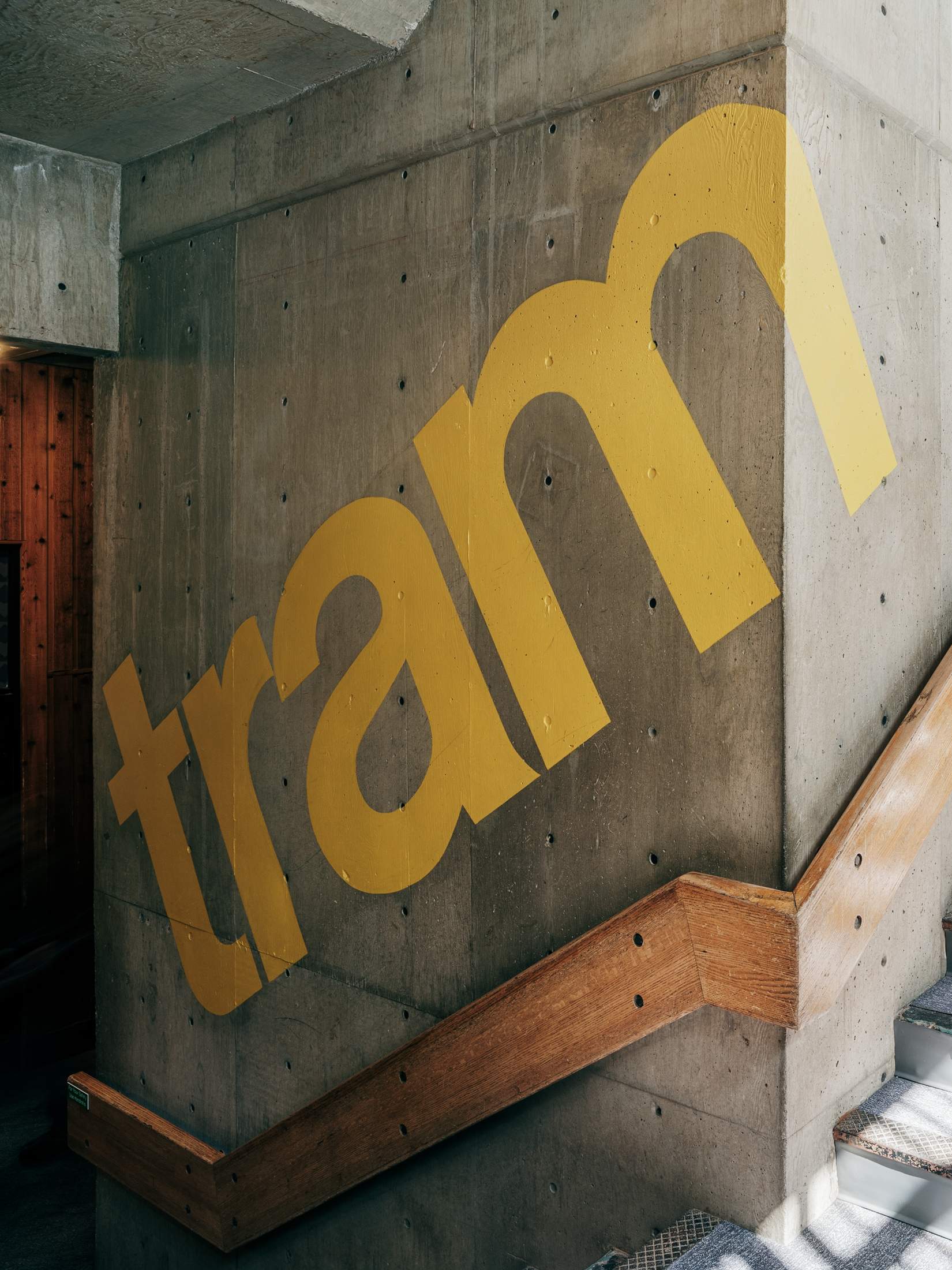
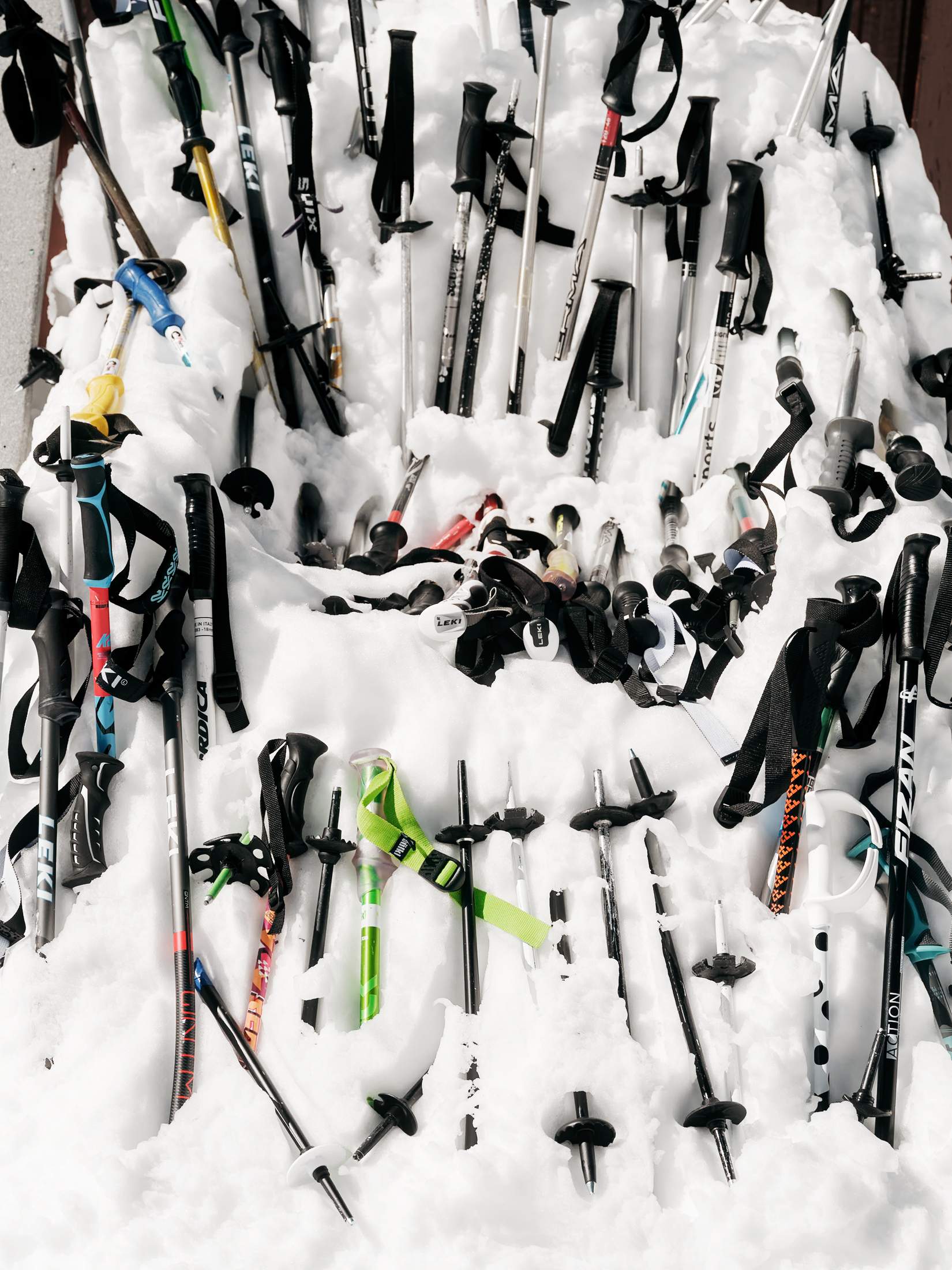

While the excessive powder, which can be up to 20 metres deep and on steep slopes, is appealing to skiers, it presents an extreme avalanche risk. All the buildings are, as a result, made from 5,000 psi reinforced concrete. (“Nuclear plants are 6,000 psi,” says Smith.) In fact, securing the resort requires triggering controlled snowslides. “We use artillery, we use remote avalanche control devices, we use helicopters,” says Fields.
Such activities can lead to a unique phenomenon called “interlodge”, where everyone at Snowbird becomes building-bound. “It’s declared when avalanches could surround the resort,” says Sarah Sherman, Snowbird’s communications manager. “It’s actually illegal to leave the buildings during interlodge.” Bright red warning signs are posted on locked doors during such events, which can last multiple days.
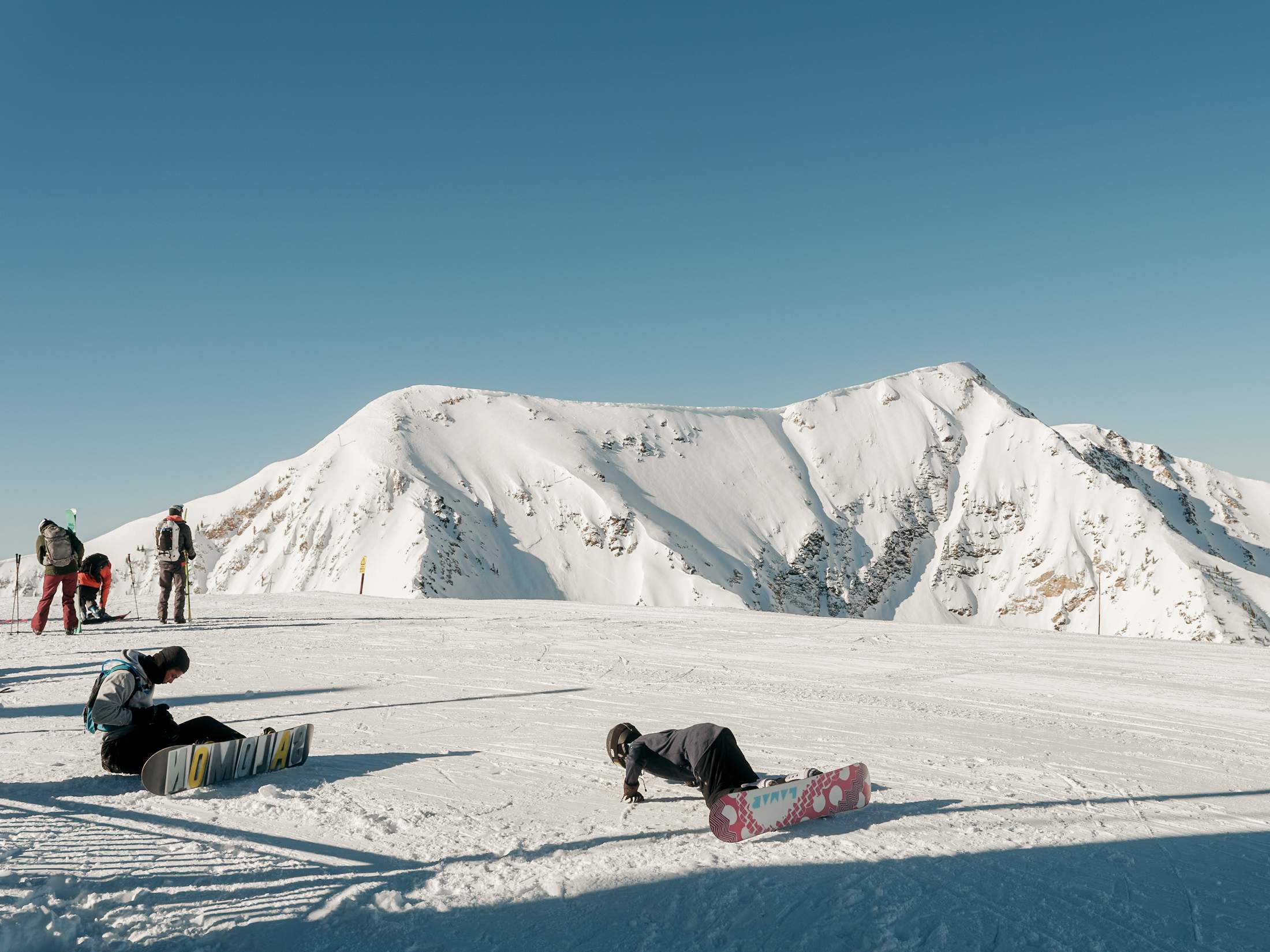
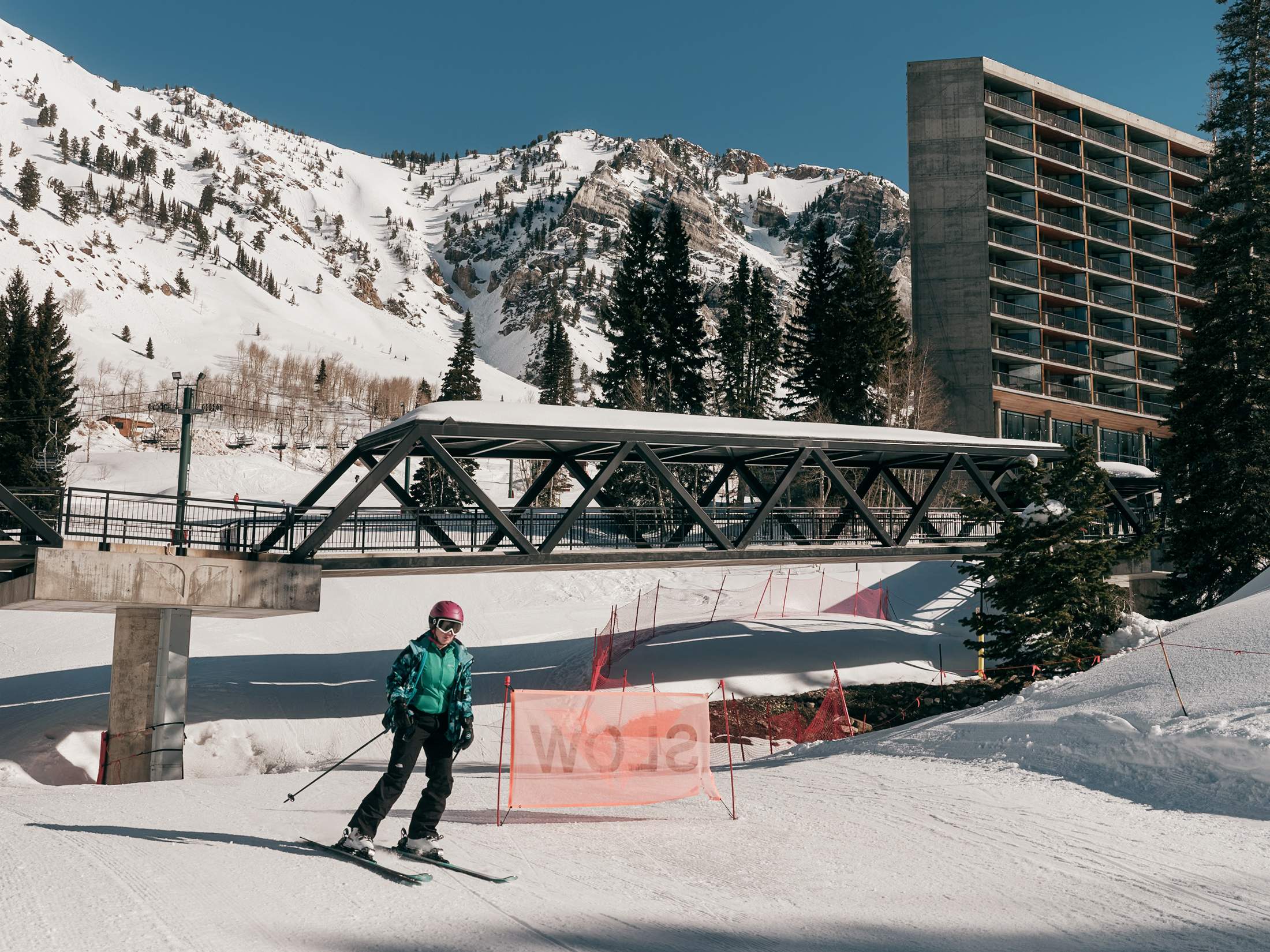
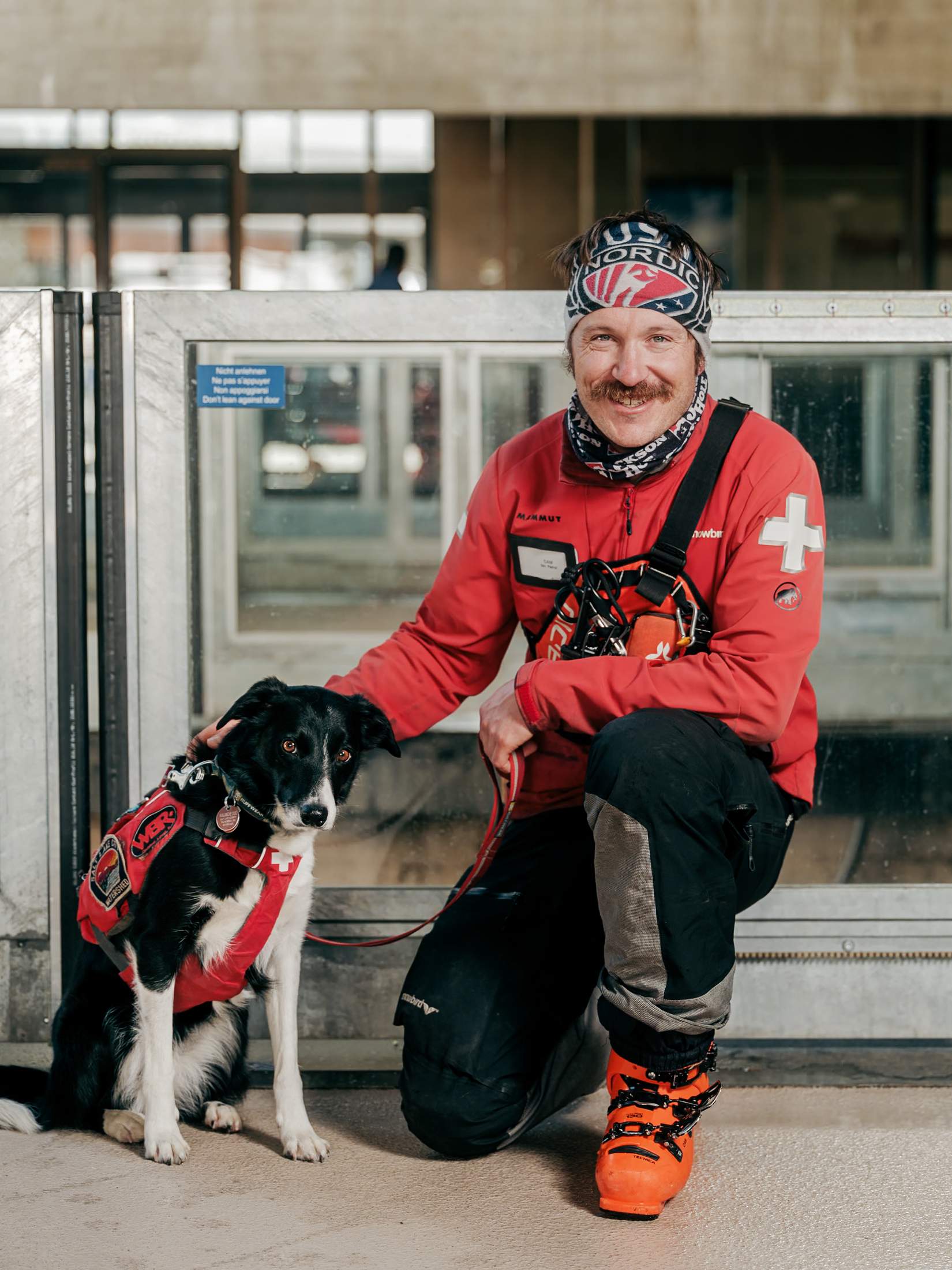
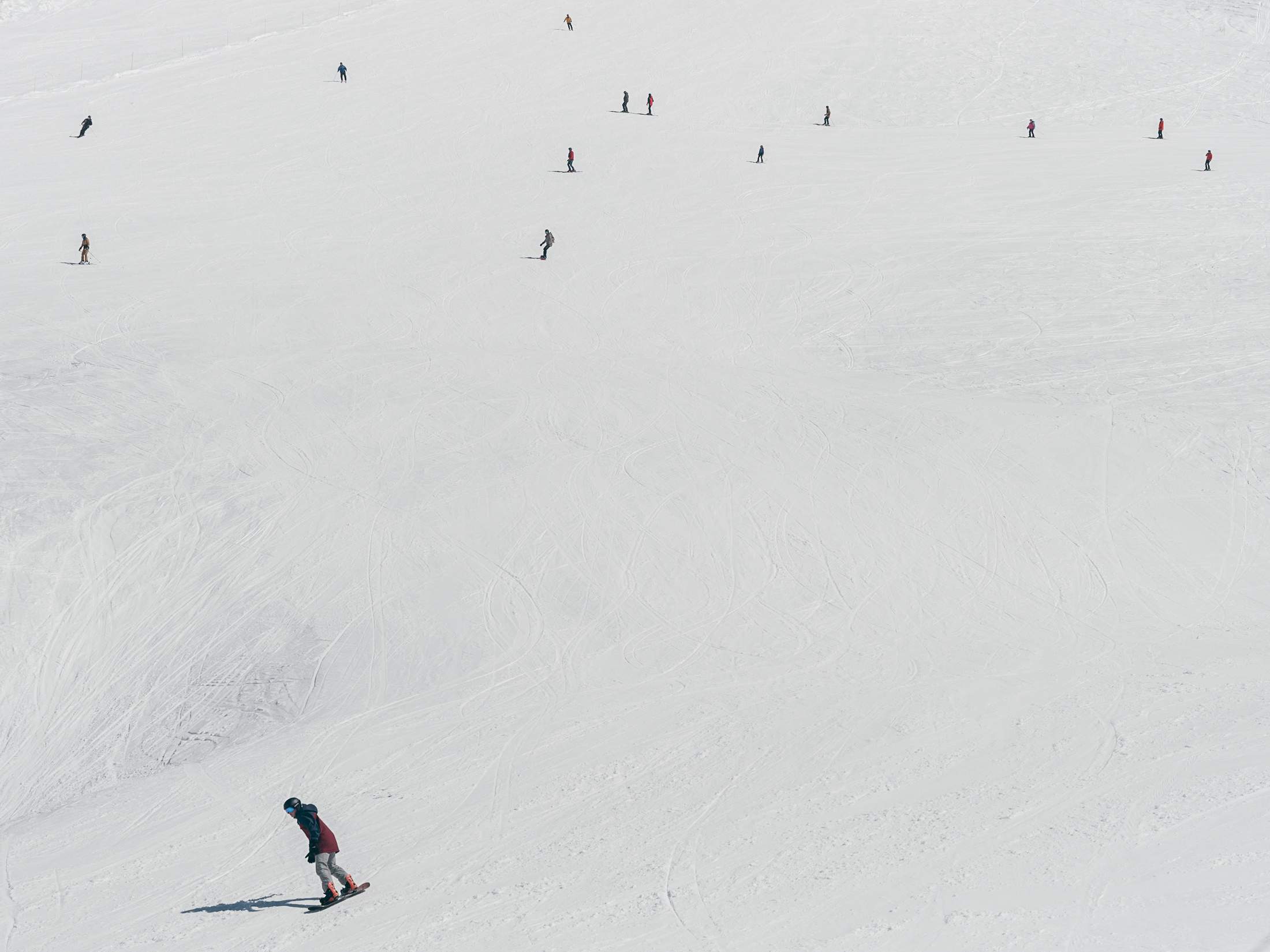
Snowbird is, in short, not a place for the ski-to-lunch-then-après crowd – and, given its steep landscape, remote location and free-spirited foundation, this is perhaps to be expected. Snowbird is about the pure love of big mountain skiing and landscapes, from the architecture they inspire to the personalities they attract. “I’ve never met someone who’s neutral about Snowbird,” says Sherman. “You love it or you hate it.”
On monocle’s last day on the slopes a figure in orange catapults off a boulder, flipping on a 10-metre drop. The entire slow-moving chairlift audience goes wild. There’s a collective, vocal, American welcome at Snowbird. “That’s only the second time that line has ever been skied,” the woman next to monocle yells out. From its creators to its fans, Snowbird is made for the mavericks. —
snowbird.com


